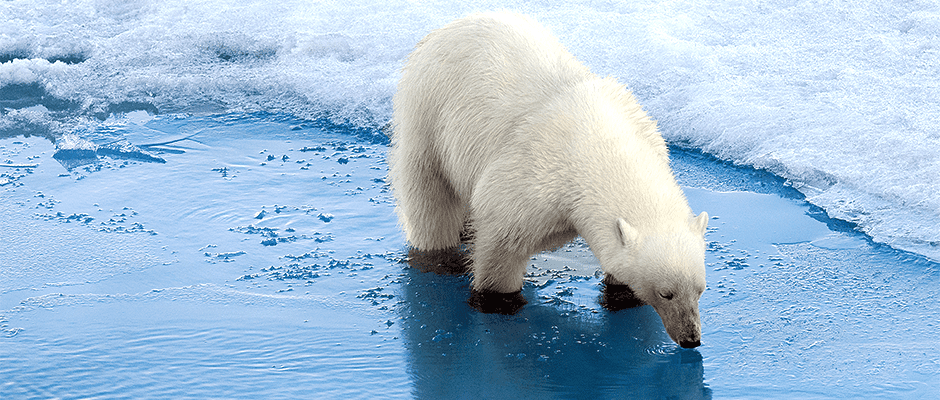Share this article
Study finds polar bears aren’t so wasteful when walking
With declines in sea ice that polar bears (Ursus maritimus) in the arctic require to subsist, researchers have seen accounts of bears traveling farther north. But what do these longer journeys cost the bears?
Not as much as past studies suggested, a team of biologists found. Although the longer distances require polar bears to spend more energy than they would otherwise, researchers found the energy cost isn’t as high as previously believed. While past studies found polar bears spend twice the energy walking as similarly-sized animals, a recent study concluded the exertion is about the same as grizzly bears (Ursus arctos) of similar size.
“My work is trying to quantify the consequences of changes in behavior based on declines in Arctic sea ice and what that might mean for polar bear energy expenditure and survival,” said Anthony Pagano, lead author of the study published in the Journal of Experimental Biology and a research wildlife biologist with the U.S. Geological Survey. Pagano has previously looked at polar bears on the sea ice. For this study, he wanted to figure out what happens if they move greater distances in the future.
Work done on subadult polar bears in Churchill Manitoba during the 1970s and 1980s found that the energy cost for walking polar bears was higher than that of similarly sized mammals. But Pagano said these studies had the bears walking pretty quickly, at around 5.4 kilometers per hour. Still, they suspected polar bears, which are semiaquatic and plantigrade walkers — mammals that walk on the soles of their feet —might have unique energy expenditure.
For his study, Pagano and his colleagues collected accelerometer data on collared bears in the wild as well as in captivity. In captivity, they studied the bears walking at speeds around 3 to 5 kilometers per hour, their preferred speed, and below.
The captive studies involved collaboration with zoos and unique techniques, Pagano said. Working with Oregon and San Diego zoos, the researchers measured the energy (oxygen consumption) the bears expended on a treadmill that keepers trained them to use. The bears simultaneously wore collars with accelerometers. This was then compared with wild polar bears and captive grizzlies at Washington State University. They found similar energy expenditure for both species.
However, when polar bears stood up from resting, they found something different. “We found those costs were quite a bit higher than similarly sized animals,” Pagano said. “This reinforced the high cost shown in previous studies.”
“We know in some regions of the arctic that bears are starting to change movement patterns with declines in sea ice,” Pagano said. “We expect to see continued increases as ice retreats further to the north. We want to better quantify implications of what those declines are.”
Header Image: As sea ice melts, polar bears may expend more energy walking. But researchers recently found polar bears don’t expend more energy than similarly sized grizzly bears. ©Christopher Michel








